Abstract
Rates of death and growth of Listeria monocytogenes inoculated onto raw whole and into chopped tomatoes stored at 10 and 21 degrees C were not influenced by prior treatment of tomatoes with chlorine or packaging under an atmosphere of 3% O2 and 97% N2. Growth of the pathogen occurred in whole tomatoes held at 21 degrees C but not at 10 degrees C, while death occurred in chopped tomatoes stored at these temperatures. Likewise, growth patterns of mesophilic aerobic microorganisms, psychrotrophic microorganisms, and yeasts and molds on whole and chopped tomatoes were essentially unaffected by chlorine and modified atmosphere packaging treatments. Populations of L. monocytogenes inoculated into commercially processed tomato juice and sauce and held at 5 degrees C remained constant for 14 days. A gradual decrease in the number of viable L. monocytogenes cells was observed in juice and sauce held at 21 degrees C. In contrast, the organism died rapidly when suspended in commercial tomato ketchup at 5 and 21 degrees C. Unlike low-acid raw salad vegetables such as lettuce, broccoli, asparagus, and cauliflower on which we have observed L. monocytogenes grow at refrigeration temperatures, tomatoes are not a good growth substrate for the organism. Nevertheless, L. monocytogens can remain viable on raw whole and chopped tomatoes and in commercial tomato juice and sauce for periods extending beyond their normal shelf-life expectancy.
Full text
PDF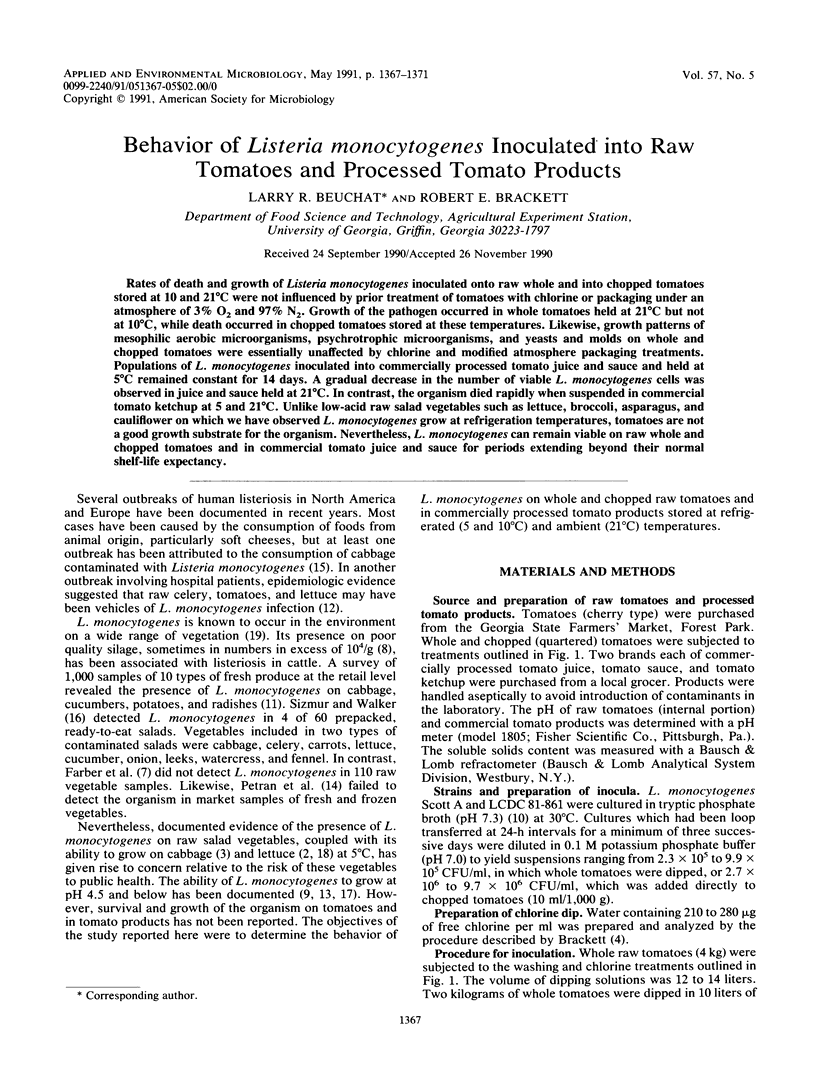
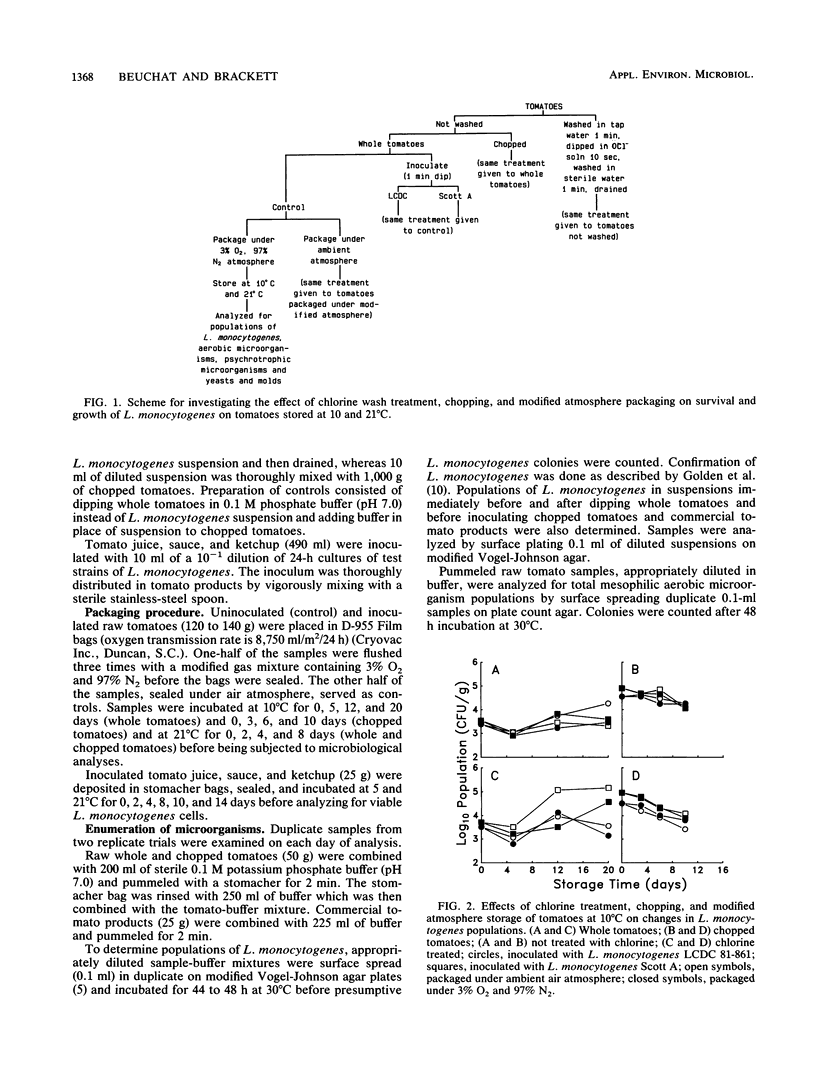
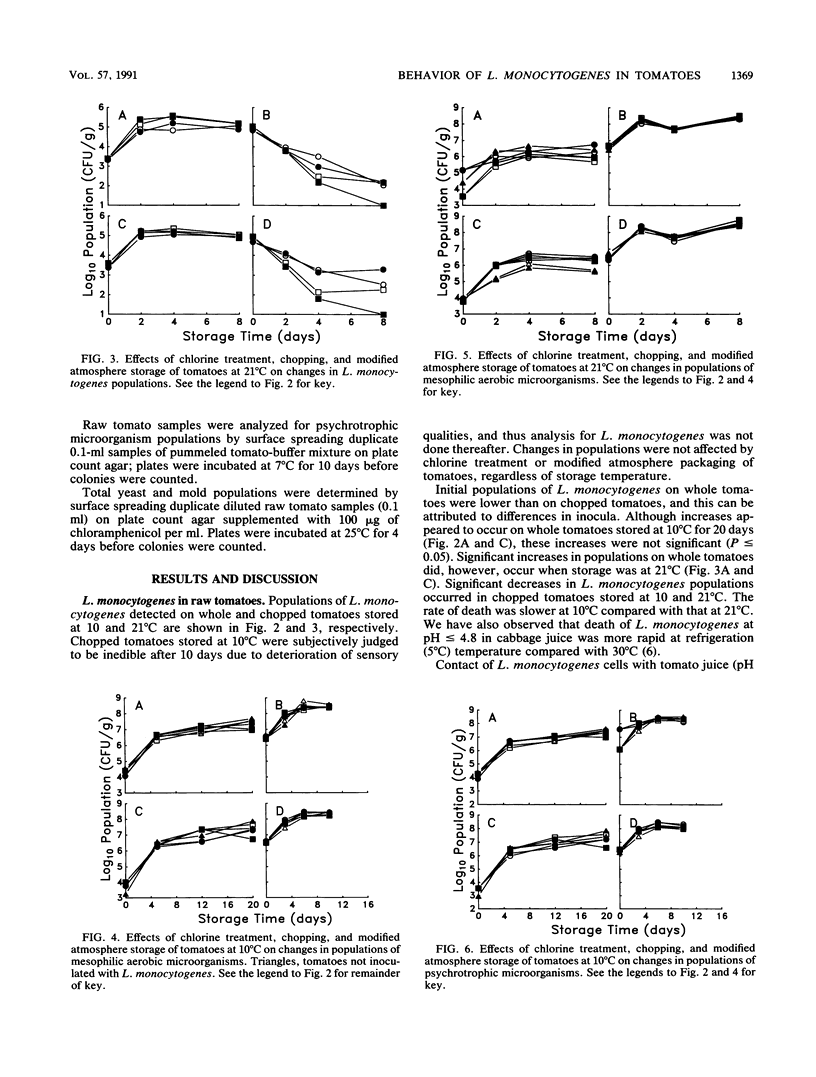
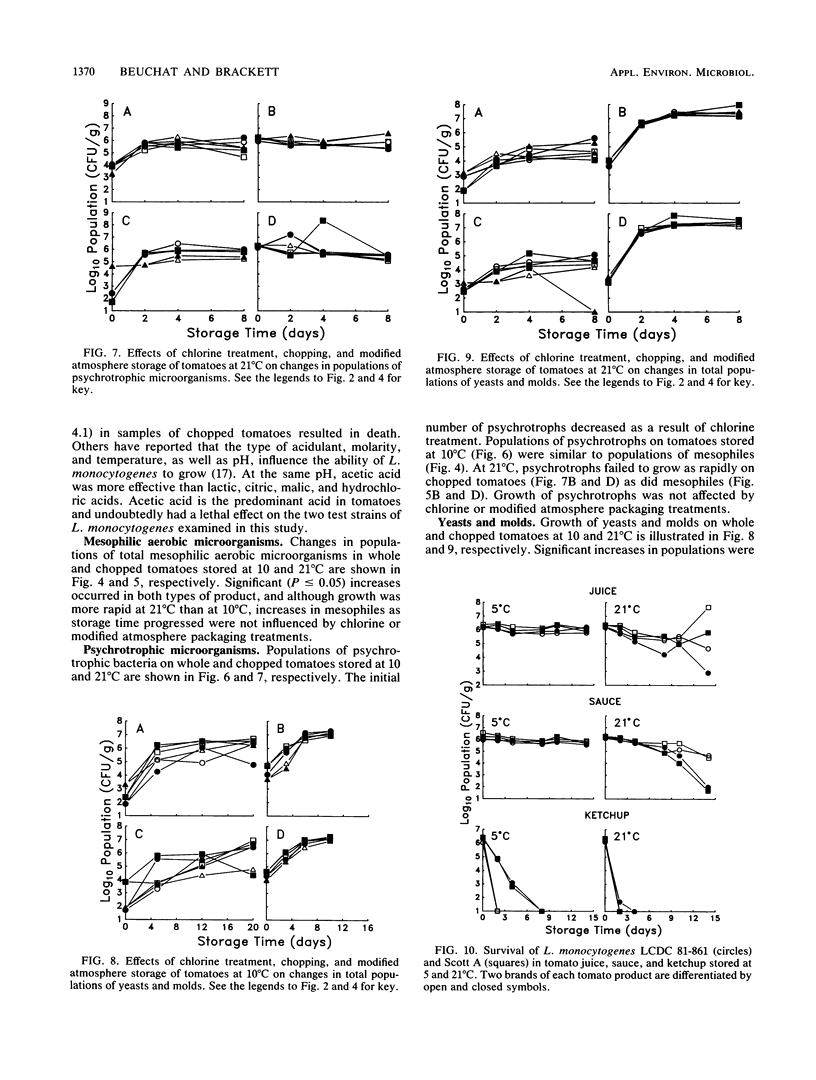
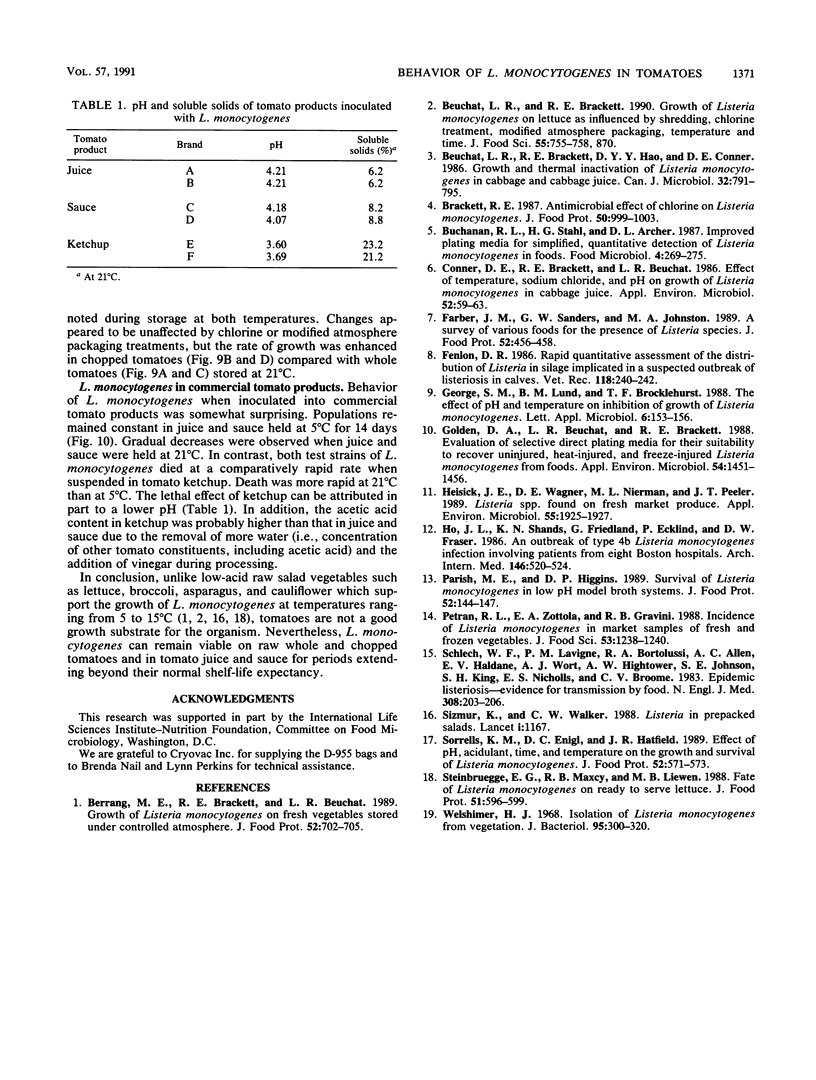
Selected References
These references are in PubMed. This may not be the complete list of references from this article.
- Beuchat L. R., Brackett R. E., Hao D. Y., Conner D. E. Growth and thermal inactivation of Listeria monocytogenes in cabbage and cabbage juice. Can J Microbiol. 1986 Oct;32(10):791–795. doi: 10.1139/m86-145. [DOI] [PubMed] [Google Scholar]
- Conner D. E., Brackett R. E., Beuchat L. R. Effect of temperature, sodium chloride, and pH on growth of Listeria monocytogenes in cabbage juice. Appl Environ Microbiol. 1986 Jul;52(1):59–63. doi: 10.1128/aem.52.1.59-63.1986. [DOI] [PMC free article] [PubMed] [Google Scholar]
- Fenlon D. R. Rapid quantitative assessment of the distribution of Listeria in silage implicated in a suspected outbreak of listeriosis in calves. Vet Rec. 1986 Mar 1;118(9):240–242. doi: 10.1136/vr.118.9.240. [DOI] [PubMed] [Google Scholar]
- Golden D. A., Beuchat L. R., Brackett R. E. Evaluation of selective direct plating media for their suitability to recover uninjured, heat-injured, and freeze-injured Listeria monocytogenes from foods. Appl Environ Microbiol. 1988 Jun;54(6):1451–1456. doi: 10.1128/aem.54.6.1451-1456.1988. [DOI] [PMC free article] [PubMed] [Google Scholar]
- Heisick J. E., Wagner D. E., Nierman M. L., Peeler J. T. Listeria spp. found on fresh market produce. Appl Environ Microbiol. 1989 Aug;55(8):1925–1927. doi: 10.1128/aem.55.8.1925-1927.1989. [DOI] [PMC free article] [PubMed] [Google Scholar]
- Ho J. L., Shands K. N., Friedland G., Eckind P., Fraser D. W. An outbreak of type 4b Listeria monocytogenes infection involving patients from eight Boston hospitals. Arch Intern Med. 1986 Mar;146(3):520–524. [PubMed] [Google Scholar]
- Schlech W. F., 3rd, Lavigne P. M., Bortolussi R. A., Allen A. C., Haldane E. V., Wort A. J., Hightower A. W., Johnson S. E., King S. H., Nicholls E. S. Epidemic listeriosis--evidence for transmission by food. N Engl J Med. 1983 Jan 27;308(4):203–206. doi: 10.1056/NEJM198301273080407. [DOI] [PubMed] [Google Scholar]
- Sizmur K., Walker C. W. Listeria in prepacked salads. Lancet. 1988 May 21;1(8595):1167–1167. doi: 10.1016/s0140-6736(88)91983-6. [DOI] [PubMed] [Google Scholar]
- Welshimer H. J. Isolation of Listeria monocytogenes from vegetation. J Bacteriol. 1968 Feb;95(2):300–303. doi: 10.1128/jb.95.2.300-303.1968. [DOI] [PMC free article] [PubMed] [Google Scholar]


